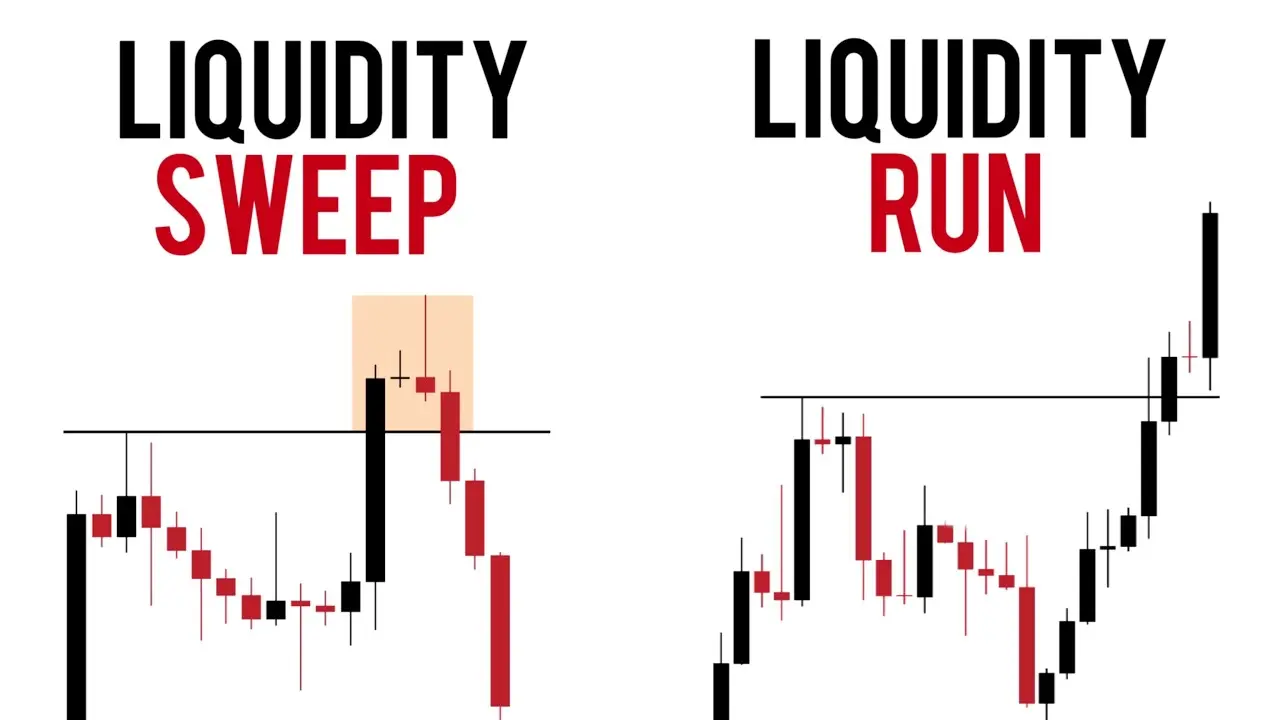In the world of day trading and scalping, understanding liquidity sweeps (also known as liquidity grabs or stop raids) is one of the most powerful ways to anticipate institutional activity.These moves reveal where big players enter the market — not through indicators, but through price behavior and liquidity dynamics.In this article, we’ll break down the logic behind liquidity sweeps, how to recognize them, and how to build setups around them using five clear, practical points.
1. Understanding Liquidity: The Market’s Fuel
Liquidity is what makes markets move. Every transaction requires both a buyer and a seller — but large institutional players can’t simply “click buy” without moving price against themselves. They need liquidity — the other side of the trade — to enter or exit massive positions.
This is why price often moves toward liquidity before it moves in the “real” direction.
Types of liquidity zones:
- Swing highs/lows: clusters of stop orders from retail traders.
- Equal highs/lows: perceived double tops/bottoms that attract stop hunters.
- Session extremes: previous day’s highs/lows and intraday ranges.
- Imbalance zones: leftover inefficiencies from aggressive moves.
When price aggressively runs these areas and then rejects, that’s often the footprint of smart money accumulation or distribution.
💡 Key takeaway:
Price doesn’t move randomly — it’s guided by where liquidity resides. Institutions need your stop to fill their entry.
2. Anatomy of a Liquidity Sweep
A liquidity sweep (or raid) occurs when price pushes through a key level — often triggering stops — only to reverse sharply after liquidity has been absorbed.
This “fake breakout” isn’t random noise; it’s the market’s way of clearing the board before the next move.
Let’s break down the anatomy step-by-step:
- Liquidity Build-Up:
Traders accumulate stops above a swing high or below a swing low. - The Sweep:
Price aggressively runs through that level — a burst of volume appears as stops are triggered and breakout traders enter in the same direction. - Absorption:
Smart money absorbs that flow — their limit orders fill against the retail breakout volume. - Reversal Confirmation:
Price fails to hold beyond the swept level, returning back inside structure. Volume and delta show absorption, not continuation. - The Real Move Begins:
Once liquidity is cleared and institutions are positioned, price moves in the opposite direction of the sweep.
📊 Example:
Price makes a new high by 3–5 ticks above a prior swing high with a delta divergence, then closes back below that high — classic liquidity raid.
💡 Key takeaway:
Sweeps are not random wicks — they are intentional liquidity events that reset positioning before a directional move.
3. Identifying Liquidity Sweeps in Real Time
Recognizing sweeps requires context and precision. Indicators can’t see intent — but orderflow, volume profile, and price structure can reveal it clearly.
Here’s how to spot high-probability liquidity sweeps:
A. Location Matters
Look for sweeps at:
- Key session levels (previous day’s high/low, London or NY open range).
- Value Area High (VAH) or Low (VAL) on the Volume Profile.
- Key imbalances or LVNs (Low Volume Nodes).
If a sweep occurs in the middle of a range, it’s noise.
If it happens at an extreme — it’s information.
B. Volume & Delta Confirmation
- A true sweep often shows volume spike but negative delta on a breakout up (or positive delta on a breakout down).
→ This indicates aggressive buyers (or sellers) are being absorbed, not rewarded.
C. Structure Retest
Once the sweep occurs and price returns inside structure, the next test of that level usually confirms intent.
→ A failed breakout becomes a valid entry zone for the reversal.
💡 Tip:
Combine timeframe alignment — e.g., a 1-min sweep confirmed on a 5-min candle closure — for higher conviction.
4. Building a Liquidity Sweep Setup
You can structure a simple yet powerful trade model around liquidity sweeps.
Here’s a 5-step framework:
1️⃣ Context
Define directional bias using higher-timeframe structure or volume profile.
You only trade against the sweep when it aligns with higher timeframe context.
E.g., sweep of highs during a macro downtrend = valid short context.
2️⃣ The Sweep Event
Price runs liquidity beyond a key level and then fails to hold — leaving a clear rejection wick or footprint of absorption.
3️⃣ Confirmation
- Delta divergence or absorption on the footprint.
- Return back inside prior structure (market profile range or previous day’s value).
- Optional: orderflow imbalance flips from aggressive buyers → sellers (or vice versa).
4️⃣ Entry & Stop
- Entry: on the first retest of the swept level or after a confirming candle close.
- Stop: a few ticks beyond the extreme wick (invalidates the sweep).
- Target: opposite side of the range or next liquidity pocket.
5️⃣ Execution Discipline
Avoid anticipating the sweep — let it complete before entering.
The key is patience — wait for confirmation that smart money has acted.
💡 Example trade:
ES futures run previous day high → breakout buyers step in → delta spikes positive → price fails and returns inside → short on retest → target = prior VWAP or mid.
5. Using Liquidity Raids for Emotional Awareness
This point is rarely discussed but critical: liquidity sweeps are psychological traps — and learning to read them helps you understand your own mind as a trader.
Here’s why they matter beyond execution:
- They expose impatience — most traders chase the breakout right before the sweep.
- They reveal FOMO — entering because price “finally broke out.”
- They train emotional discipline — waiting for confirmation after the sweep forces patience.
- They improve journaling quality — you can log how often emotional entries occur around liquidity zones.
By observing liquidity raids not just as technical events but as behavioral patterns, you develop psychological resilience.
The same mechanism that hunts retail stops can also hunt your emotions — unless you stay objective.
💡 Mindset takeaway:
Every sweep is a test — of both market structure and mental structure.
Conclusion
Liquidity sweeps and stop raids are the heartbeat of institutional trading.
They are not traps for the sake of manipulation — they’re tools of necessity in a market that needs liquidity to function.
When you understand that price seeks liquidity before moving directionally:
- You stop chasing breakouts.
- You start anticipating reversals with logic.
- You align with smart money instead of fighting it.
By combining structure, orderflow, and patience, liquidity sweeps become one of the cleanest and most powerful setups in any intraday strategy.
Not because they win every time — but because they show you where the real game is being played.

.png)


